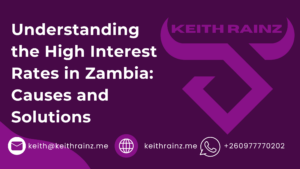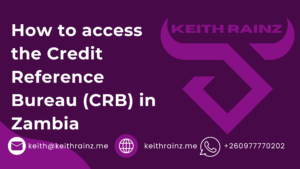Have you ever wondered how the banking system in Zambia operates? The framework is regulated by the Bank of Zambia (BoZ), the nation’s central bank, and comprises various components such as commercial banks, microfinance institutions, and savings and credit cooperatives.
Overview of the Banking System in Zambia
1. Regulation and Oversight by the Bank of Zambia (BoZ)
- Role of the Central Bank: The Bank of Zambia oversees the banking sector, maintaining financial stability, controlling inflation, and fostering financial inclusion. It manages monetary policy, issues currency, and supervises financial institutions.
- Licensing Requirements: All banks and financial entities must obtain a license from the BoZ to operate in the country. The BoZ sets regulations regarding capital requirements, risk management, and consumer protection standards.
- Monetary Policy Management: The BoZ regulates interest rates and reserve requirements to manage liquidity and ensure economic stability.
2. Types of Banks in Zambia
- Commercial Banks: These are the primary institutions in Zambia’s banking landscape, offering a variety of services, including savings and checking accounts, loans, and foreign exchange. Notable commercial banks include Standard Chartered, Zambia National Commercial Bank (Zanaco), and ABSA (formerly Barclays).
- Development Banks: Institutions like the Development Bank of Zambia (DBZ) focus on providing long-term funding for projects in infrastructure, agriculture, and industry.
- Microfinance Institutions (MFIs): These cater to small and medium-sized enterprises (SMEs) and low-income individuals who often lack access to traditional banking. They provide microloans and tailored financial products.
- Non-Bank Financial Institutions (NBFIs): This category encompasses insurance companies, pension funds, and leasing firms that offer specialized financial services to complement traditional banks.
3. Banking Services
- Deposit Accounts: Commercial banks provide various account types, including savings, current, and fixed deposits, allowing customers to deposit, withdraw, and transfer funds.
- Credit Facilities: Banks offer loans for personal, business, and mortgage needs, with lending terms based on credit assessments and collateral requirements.
- Digital Banking: The rise of digital platforms, such as mobile and internet banking, has significantly enhanced financial inclusion. Services like Airtel Money and MTN Mobile Money allow for seamless transactions without the necessity of a traditional bank account.
- Foreign Exchange Transactions: Given Zambia’s reliance on exports, particularly copper, banks facilitate foreign exchange transactions, helping individuals and businesses access foreign currency for trade and travel.
4. The Role of Banks in the Economy
- Supporting Trade and Investment: Banks are integral to the financial infrastructure required for both domestic and international trade, providing credit, foreign exchange, and payment services.
- Implementing Government Fiscal Policies: The banking sector plays a role in executing government policies by financing projects through bonds and treasury bills, with commercial banks often investing in these instruments to manage liquidity and earn returns.
- Promoting Financial Inclusion: Initiatives led by the BoZ, alongside banks and MFIs, aim to extend financial services to rural and underserved communities. The growth of mobile money has been crucial for enhancing access to financial resources.
5. Challenges Facing Zambia’s Banking System
- Limited Rural Access: Despite improvements, many rural residents still lack access to formal banking services, relying heavily on informal financial systems.
- High Borrowing Costs: Economic factors like inflation contribute to relatively high interest rates, restricting access to credit, particularly for small businesses.
- Currency Instability: Zambia’s economy is significantly influenced by copper exports, leading to fluctuations in exchange rates that can destabilize the banking system, especially concerning foreign currency transactions.
6. Regulatory Reforms and Financial Innovations
The Bank of Zambia is actively implementing reforms to bolster the banking system’s resilience. These include enhancing risk management, promoting financial inclusion, and encouraging digital transformation within the sector.
Innovations such as FinTech and blockchain technology are being explored to improve efficiency, transparency, and reduce transaction costs.
Conclusion
Zambia’s banking system is a complex blend of traditional banks, development-focused institutions, and emerging financial technology players. Although challenges like limited rural access and high borrowing costs persist, the sector continues to evolve under the stewardship of the Bank of Zambia. The increasing adoption of digital banking and microfinance services has significantly advanced financial inclusion, enabling a greater number of Zambians to engage in the formal economy.

I am Keith Rainz a content creator in Zambia. I specialize in forex and crypto trading. You can WhatsApp me via +260977770202.







